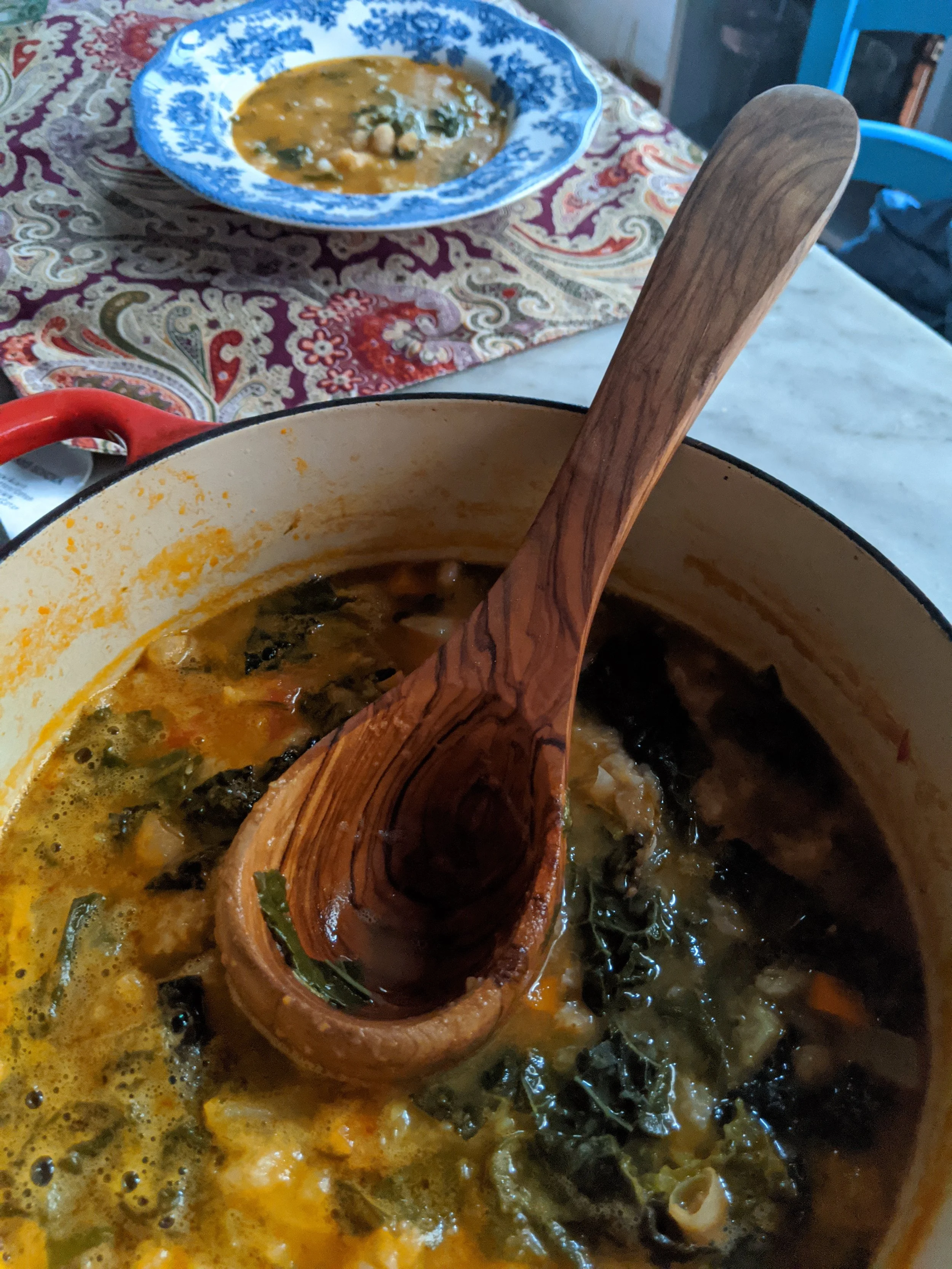Ribollita
In Tuscany Cavolo Nero, which translates to black cabbage, appears from late September until about late March/ early April. In the US it’s known as Tuscan Kale, Lacinato Kale or Dinosour Kale. It’s a staple of Tuscan cuisine during the Fall/Winter seasons, and one of the main stars in Ribollita, a Tuscan bean soup. Anyone that has visited Tuscany during the Fall months, or hope to visit in the future is sure to find it on all local restaurant menus in soups, in pasta sauces, pasta fillings, pestos or as a contorno which is a vegetable side to accompany a second course (meat, chicken and fish course).
In the US we LOVE our kale salads, whereas in Italy it’s typically used as a cooked green. I’m sharing both types of recipes to showcase how varietal this ingredient is. Not only is it tasty, but its a great source of fiber, antioxidants and many essential vitamins. It’s a Super Green!
Ribollita gets its name from ribollire which means to reboil. It’s soup that’s by tradition is recoiled when adding the ingredients, as well as served the following day,hence the name. It’s one of the signature dishes of Tuscan cucina povera. Cucina povera means poor cooking, food made of humble ingredients, being resourceful and not wasteful. I’ve bought fresh market ingredients to make the soup and canned cannelini, but it was born out of making a soup with leftover Tuscan staples such as stale bread, cabbages that last a while and typically on hand during the fall and dried beans.
This classic Tuscan comfort food will transport your palate to Italy on these crisp Autumn days. Hope you get to share it for your family/friends to warm up the days with comfort food!
Serving Ribollita with the Artisanal Olive Wood Ladle
Ingredients:
2 carrots, peeled and medium diced
1/2 a blond onion, medium diced
1 celery stalk, medium diced
240 gm (1 small can) cannellini beans
3 whole peeled tomatoes (canned ok)
50 gms (2 cups) Tuscan Kale (also known as Lacinato Kale, Dinosaur Kale or Cavolo Nero)
50 gms (1 cup) Savoy Cabbage
40 gms (1 cup) Swiss Chard
A sprig of fresh rosemary
A couple sprigs of thyme
40 gms (2 cups, about 3 to 4 slices stale bread), crust removed and diced.
EVOO
Salt
Mise en Place
Method:
In a small/medium pot drizzle some EVOO, and head on low to medium. Once the oil starts sizzling, add the carrots, onion, celery and sauté about 8 minutes, then add he fresh herbs. Stir the herbs into the soffritto and cook together for a couple mins. Drain the Cannellini beans and stir with the soffrito to combine flavors for a few minutes. Add the tomatoes and cook for about 10 minutes, smashing the tomatoes with the back of the spoon. Add water if needed to cover all ingredients, about 600 ml (20 oz). Meanwhile wash and clean the greens. With the kale, make sure to remove the fibrous stem and give the kale a rough chop. Chop the Savoy cabbage into small 2 cm (1 in) pieces, it doesn’t have to be exact basically not to small and not too large of pieces. The Swiss chard can be chopped into similar size as well.
By now the soup will have been cooking more than 15 min. If desired (I recommend) take about 4 ladles of the bean mixture and blend with an immersion blender, keep to the side. Add all the greens to the soup in batches as it wilts into the soup, and add two pinches of salt. These greens are long cooking greens, I like them to still have a bite however by tradition it should cook until the greens are quite soft. Refill water as needed because it is a soup and all ingredients should be covered. Once the greens are cooked through, stir the reserved puréed soup and turn off the heat. Adjust seasoning with salt. Add the bread and stir into the soup and let it sit a bit covered. The bread will soak up the liquid and meld into the soup.
Tuscan Bread Soaking in the Ribollita
Bring the soup back to a boil, uncovered and stir in the bread pieces to really combine with all the ingredients. Soup is ready to be served into bowls.
Feel free to garnish with a drizzle of EVOO. Also, best served as is tradition the day after cooking. One of my soup secrets that is not part of the traditional Tuscan Ribollita is to add a leftover cheese rind into the soup when I add the water, this adds a special something and umami to your soup. A cheese rind of an aged cheese like a parmigiano or pecorino would be great. Enjoy!
Ribollita








